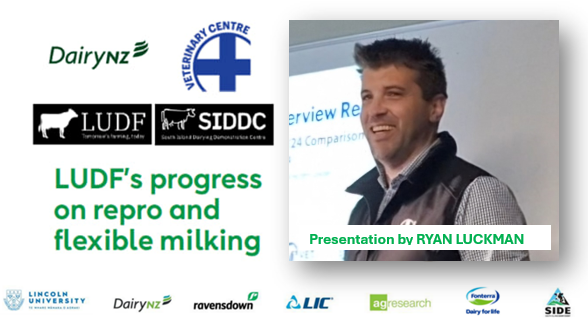LUDF Reproduction Benchmark Project
The 2021 SIDDC strategy is based on lowering the LUDF greenhouse gas emissions by decreasing our replacement rate to 15 %. To do this, we need an empty rate of 8-10%.
For the 2021 mating season, LUDF had yet another very high empty rate of 20%, following 18% in 2020. Strong submission rates, potential benefits coming from 10 in 7 milking (which was instigated 1st day of lactation) and 40 kg MS/cow less production alluded to a good result. However, after scanning the farm was left yet again wanting for answers. This issue is not unique to LUDF. The average empty rate is 16 % for Canterbury. A high empty rate is one of the greatest costs of wastage facing our national herd. Over the last 15 years, there have been many theories but no concrete answers or solutions.
To help us determine what the issues are, a benchmarking project against LUDF and top quartile local performing farmer, Liam Kelly has been set up. We have engaged with a working group of top practitioners from LIC, Dairy NZ, Lincoln University, Dunsandel vets and on-farm management. They have been instrumental in designing the benchmarking program and have agreed to see this project through to the conclusion to help us come up with some answers.
Key areas of focus will be:
1. Cow condition
2. Energy balance through liver activity
3. Feeding levels and supplementation
4. Milk production levels and composition
5. Progesterone testing
6. Follow up multiple pregnancy tests
7. Cow rumination and activity
So far, a comparison with the LUDF mating and farmer Liam Kelly shows that consistently LUDF repro performance drops off from 6 – 8th November:
To help us understand what is happening at LUDF, and potentially a number of farms in New Zealand, we will continue to monitor LUDF and Liam Kelly intensively to establish the key drivers to Liam's success and what could be going wrong at LUDF. Liam's farm is on a similar scale to LUDF, using collars and feeding grain in limited amounts, Liam typically produces 510 – 520 kg MS/cow.
Results from the 2022 mating season can be found here.
A 2022/23 vs 2023/24 comparison report can be found here.
For more information on the 2022 mating plan click here. (link to Breeding and Reproduction)

2023/24 Review of LUDF Reproduction Benchmark Project
